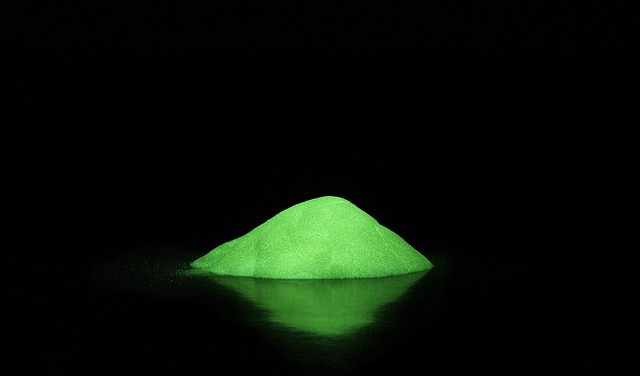A team of researchers at the Indian Institute of Science (IISc), Bengaluru, has engineered a new molecule that promises to revolutionize anti-counterfeiting measures and bioimaging.
Designed within the Department of Inorganic and Physical Chemistry (IPC), this novel chiral aminoborane molecule exhibits extraordinary persistent room-temperature phosphorescence and circularly polarised luminescence (CPL), offering a significant leap forward in photonic materials.
The scientific community has long sought metal-free, lightweight, and structurally tunable photonic materials. The IISc breakthrough addresses this need head-on, moving away from the expensive, biologically incompatible, and environmentally unfriendly inorganic phosphors and heavy metal complexes currently dominating the market.
“From anti-counterfeiting ink to bioimaging agents, phosphorescent materials that glow after light exposure are critical for security and sensing applications,” an IISc spokesperson stated.
“However, most current systems rely on inorganic phosphors or heavy metal complexes, which are expensive and biologically incompatible, and are not environment-friendly.”
Achieving long-lasting phosphorescence at room temperature in organic materials has historically been a formidable challenge.
Furthermore, the integration of CPL with phosphorescence in small organic molecules has remained largely elusive until now.
The potential of these new molecules was recently showcased in a study published in Communications Chemistry, demonstrating their remarkable capabilities in anti-counterfeiting applications.
The research team formulated inks using the phosphorescent molecules, effectively revealing hidden information through selective light exposure.
In a compelling demonstration, a sample text message exposed to UV light initially displayed “1180” due to its fluorescent response. However, once the light source was switched off, the hidden message “IISc” emerged in the dark, sustained by the persistent afterglow of the new molecule.
Looking ahead, the research team is focused on enhancing the emission efficiency of the system, which would significantly boost its utility in critical areas like bioimaging and advanced photonic materials.
Professor P. Thilagar, corresponding author and a leading figure at IPC, expressed the team’s optimism: “With precise molecular design, we’re beginning to bridge the gap between structural rigidity and multi-functional emission. This work adds a new chapter to the ongoing story of small organic phosphors.”
What is Phosphorescence
Phosphorescence is a type of photoluminescence where a material absorbs light energy and then slowly re-emits it over an extended period, typically continuing to glow for seconds, minutes, or even hours after the initial light source is removed.
The process works through a quantum mechanical phenomenon involving electron energy states. When phosphorescent materials absorb photons, electrons get excited to higher energy levels. However, unlike fluorescence where electrons return directly to their ground state and emit light immediately, phosphorescent materials have what’s called a “triplet state” – an intermediate energy level where electrons can become temporarily trapped.
From this triplet state, electrons slowly transition back to the ground state, releasing photons gradually over time. This is why phosphorescent materials have that characteristic “afterglow” – they continue emitting light long after you turn off the light source that initially excited them.
Common examples include glow-in-the-dark toys, watch dials, emergency exit signs, and some types of paint. Many of these use zinc sulfide doped with copper or other phosphorescent compounds. The duration and intensity of the glow depends on the specific material, how much light energy it absorbed, and environmental factors like temperature.
Phosphorescence differs from fluorescence primarily in timing – fluorescent materials emit light immediately and stop glowing as soon as the excitation source is removed, while phosphorescent materials have that persistent afterglow effect.
Circularly polarized luminescence
Circularly polarized luminescence (CPL) is a phenomenon where luminescent materials emit light that is circularly polarized – meaning the electric field vector of the emitted light rotates in a helical pattern as the light propagates.
In regular luminescence, the emitted light is typically unpolarized or randomly oriented. But in CPL, the light waves have a specific handedness – they can be either left-circularly polarized (rotating counterclockwise) or right-circularly polarized (rotating clockwise) when viewed head-on.
This occurs in materials that have chirality – a structural asymmetry where the molecule or crystal structure cannot be superimposed on its mirror image, like your left and right hands. When chiral luminescent materials are excited, they preferentially emit photons with one circular polarization over the other.
CPL is characterized by several key parameters.
The luminescence dissymmetry factor (glum) quantifies how strongly circularly polarized the emission is, ranging from -2 to +2. A value near zero means unpolarized light, while values closer to ±2 indicate highly circularly polarized emission.
CPL can arise from several sources: intrinsically chiral luminophores (like certain organic molecules or metal complexes), achiral luminophores in chiral environments (like quantum dots in chiral ligand shells), or materials with induced chirality through external fields or chiral dopants.
This phenomenon has exciting applications in 3D displays, optical data storage, spintronics, and quantum optics. It’s also valuable for studying molecular structure and dynamics, since the degree and handedness of circular polarization provides information about the chiral environment of the emitting species.
CPL represents an intersection of chirality, photophysics, and materials science, offering both fundamental insights into light-matter interactions and practical technological possibilities.

